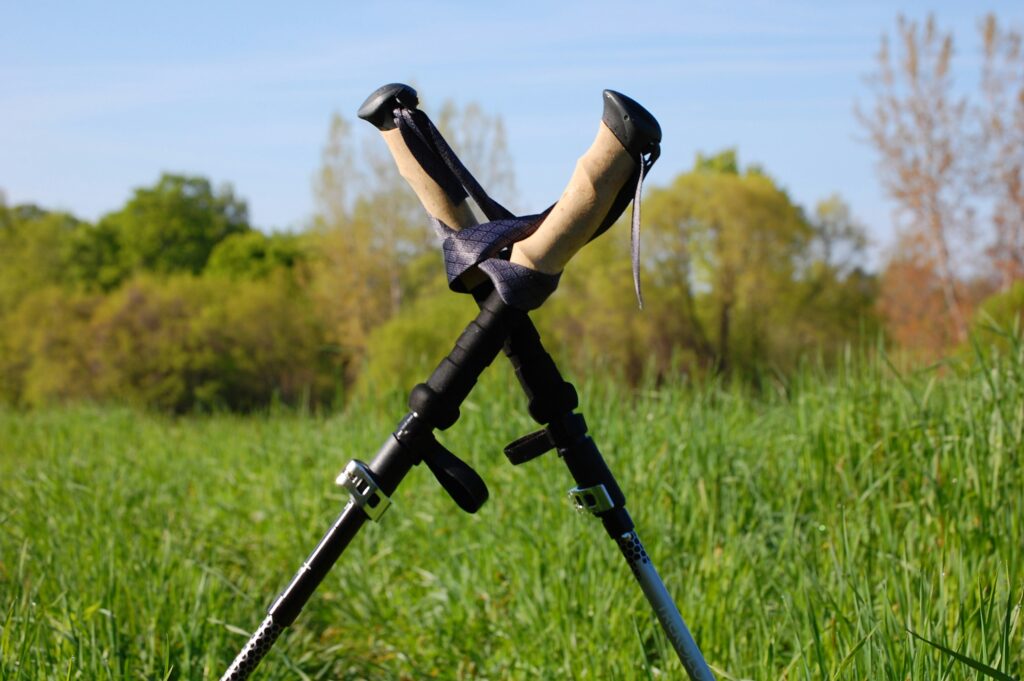Embarking on a hiking adventure is a thrilling experience, but the challenges of uneven terrains, steep ascents, and descents can take a toll on your body. One valuable tool that can significantly enhance your hiking experience is the trusty trekking pole. These versatile companions provide stability, reduce impact on joints, and offer balance on rugged trails. Whether you’re a seasoned hiker or a novice, here are eight essential tips to maximize the benefits of using trekking poles on your next outdoor escapade.
Adjust Your Poles Correctly
Before hitting the trail, ensure that your trekking poles are properly adjusted to your height. Most trekking poles are telescopic, allowing you to customize the length. Adjust them so that your elbows are at a 90-degree angle when holding the grips. Proper adjustment ensures that you can maintain a natural and comfortable posture while hiking.
Learn the Proper Technique
Mastering the correct technique for using trekking poles can make a world of difference. As you walk, plant the pole in front of you and push down, using your arm and shoulder muscles. This motion not only provides stability but also helps propel you forward. On descents, place the poles slightly ahead to absorb the impact and ease the strain on your knees.
Use the Wrist Straps
Many hikers overlook the importance of wrist straps on trekking poles. These straps aren’t just for show – they play a crucial role in distributing the weight and reducing the strain on your wrists. Slip your hands through the straps and make sure they are snug but not too tight, allowing you to maintain a relaxed grip on the poles.
Mind Your Grip
Speaking of grip, it’s essential to hold the trekking poles correctly. Grasp the handle firmly, but don’t over-tighten. You want a relaxed grip to avoid fatigue. Some trekking poles come with ergonomic grips designed to provide comfort and reduce hand strain during long hikes.
Use Poles for Balance on Tricky Terrain
Trekking poles become invaluable on challenging terrains. Crossing streams, navigating rocky paths, or tackling slippery surfaces become significantly safer with the added stability of trekking poles. Use them to test uncertain footing and redistribute your weight to prevent slips and falls.
Choose the Right Material
Trekking poles come in various materials such as aluminum and carbon fiber. While aluminum poles are durable and more budget-friendly, carbon fiber poles are lightweight, making them a popular choice for long-distance hikers. Consider your hiking preferences and terrain when selecting the right material for your trekking poles.
Take Advantage of the Built-in Features
Many modern trekking poles come with additional features, such as shock absorbers and interchangeable tips. Shock absorbers reduce the impact on your wrists and arms, especially during descents. Interchangeable tips, such as rubber for hard surfaces and carbide for softer terrains, allow you to adapt your poles to different trail conditions.
Pack and Store Them Properly
When your hiking adventure comes to an end, take the time to clean and store your trekking poles properly. Extend the telescopic sections to allow air circulation, preventing mold and mildew. If your poles have removable tips, check and replace them as needed to ensure optimal performance on your next trek.
Conclusion:
Trekking poles are an excellent addition to any hiker’s gear arsenal, providing support, stability, and enhanced performance on the trail. By mastering the proper techniques, adjusting your poles correctly, and taking advantage of their features, you’ll be well on your way to a more comfortable and enjoyable hiking experience. So, strap on those trekking poles, hit the trails, and let the great outdoors become your adventure playground.

